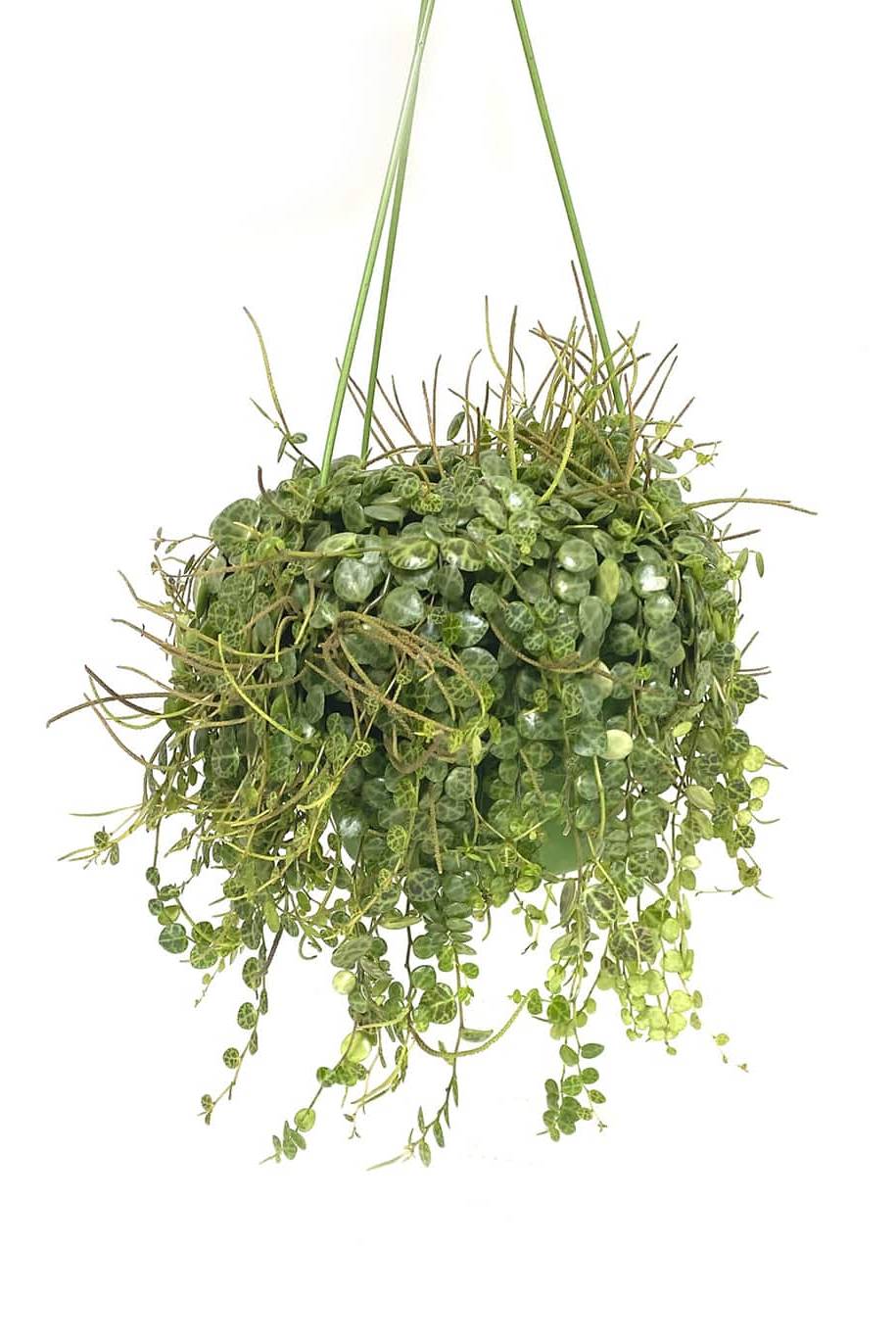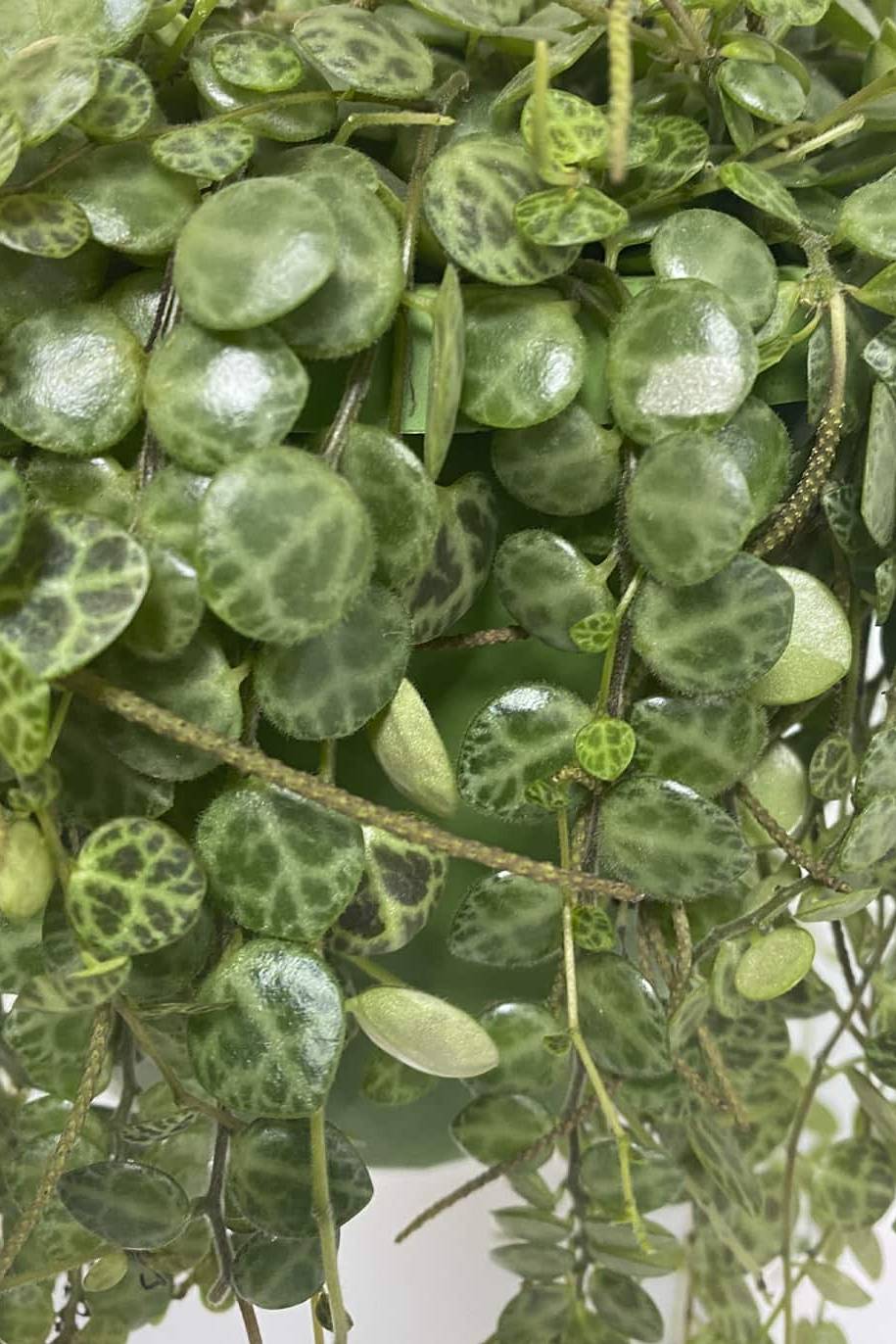Watering
Spray water once in 2 weeks to moisten soil but be sure water does not pool up at the bottom of container which can cause rotting. Allow soil to dry between waterings.
Dismiss



Peperomia Prostrata
SKU 3657
Spray water once in 2 weeks to moisten soil but be sure water does not pool up at the bottom of container which can cause rotting. Allow soil to dry between waterings.
Bright indoor light or indirect sun. 6 hours to 8 hours
Maintain temperatures between 18°C - 24°C. Avoid draughts as these can create undesirable temperature fluctuations. Consider giving your plant an occasional misting twice every week to maintain the optimum humidity level.
Apply succulent fertilizers once in 40 days. For best results use Folikraft ready to use Succulent Plant Food.
It is a slow-growing tropical annual and perennial with succulent leaves; prefers cold to warm temperatures with humid weather, in other words, average home temperature.
This Peperomia does not take up much room and will not invade your indoor space or neighboring plants.
It is an excellent addition to your container garden or terrariums.
Prostrata is a miniature plant with a plant height of 1 foot, and the plant width varies based on the pot size. The max. height will be achieved in 3-5 years.
The small leaves have beautiful patterns of white veins that vary in color from maroon to dark blue to purple for young plants and become silvery-white as the plant matures.
In this article, I have prepared a complete care guide for peperomia prostrata, including the tips and frequently asked questions about this indoor plant.
Peperomia Care Guide
Peperomia prostrata is a well behaved and beautiful looking vining plant.
The turtle print leaves create a tropical look if used as an indoor plant. Follow the care tips given below to grow a healthy peperomia prostrata.
Soil
Originating from South American rainforests, these plants enjoy loamy and wet soil conditions.
But be wary that this plant cannot tolerate waterlogged soils; the fragile stems will rot if the plant is kept soggy for an extended time period.
A peat-based soil best suits the peperomia prostrata, but you can choose any soil medium that is well-drained and has excellent aeration properties.
It is crucial to maintain proper drainage to get rid of the excess water for plant growth.
You can improve the aeration of the soil by adding perlite to the potting mix.
Fertile potting soil will encourage root growth and increase the strength of the vine.
Choose a soil with pH falling between 5 to 7 that is acidic to neutral.
Light
Peperomia prostrata is a sun-loving succulent that enjoys bright but indirect light for optimum growth.
Do not expose the peperomia plant to direct sunlight for several hours. One or two hours of direct sun during the morning are more than enough.
This indoor plant can also be easily grown under artificial or fluorescent lights.
Avoid exposing the pant to too much light as it can harm the foliage.
For this vining plant, the growth starts at the top. When choosing a spot for the newly potted plant, make sure the topsoil is receiving light.
Depending on the direction of the light in your apartment or home, choose a window shelf or a lower shelf.
The perfect spot has some shade and some light. The plant can easily survive in moderate lighting conditions.
Choose a north-facing or south-facing window sill to place the pot for optimal light conditions.
You can read more about the best window directions for specific plant requirements in my blog post about light levels for plants.
Watering
In terms of watering, it’s better to be underwater than overwater as the prostrata plant can rot easily.
You do not need to water the plant very often. This succulent plant prefers slightly moist soil conditions.
Therefore, I would suggest keeping the soil moist in the growing season, but in summer and winter, allow the soil to properly dry before watering.
Do not make the soil waterlogged by overwatering.
Check the plant before irrigation; water the plant when the top few inches of the soil are dry.
In the case of overwatering the plant will start shedding leaves. But if too many leaves have begun falling, temperature and fertilizer might be the culprit.
The Peperomia prostrata plant is highly susceptible to overwatering.
Wilted scab like bumps on the leaves indicates overwatering. When the roots are waterlogged, the essential nutrients from the soil are washed away that will cause the leaves to shed.
In winter, water sparingly since the leaves will store water.
With less temperature and light, the plant needs less watering.
To avoid overwatering, give the plant water equal to 1/5th of the volume of the pot. Water the plant once every two to three weeks.
You can typically water the plant using the top watering method. But if you have a small pot, you can also consider bottom watering.
For bottom watering, place the pot in a container and fill it with water so that 1/4th of the pot is submerged in water.
Leave the pot in the container for about 10 minutes and later allow the water to drain.
Your plant can also suffer from under-watering with deflated or flat leaves, little or no growth, and a significant decrease in foliage.
If the pot is placed in a spot with too much sunlight, the soil will dry out far too quickly and scorch the plant’s leaves. This is when you have to move your plant to a shady location to avoid the worst.
Be careful while watering. Do not allow the excess moisture to sit on the soil surface. You can use the bottom-up method to avoid root rot.
Root rot is a severe condition that can kill your plant. Read more about root rot in this blog post.
Temperature
Maintain a temperature between 64°F to 75°F (18°C – 24°C) but never lower than 50°F (10°C).
Peperomia prostrata is not frost hardy; the vines will start to wilt in temperatures lower than 50°F (10°C).
This plant will be happy in general room temperature conditions
Humidity
As compared to other succulents, Peperomia prostrata prefers slightly more humidity and water. In summer, mist the leaves or place the plant in a gravel tray with water to increase the humidity.
But make sure that the leaves do not stay wet for too long.
Pruning
The main goal of pruning is to control size and growth. If your vine has grown excessively bushy, prune the top of some of the stems to reduce the growth.
You can also remove the bigger stems, dead foliage, or damaged leaves.
Avoid heavy pruning as it will cause the plant to lose its lush, bushy appearance, and significantly hinders plant growth.
Pruning is necessary to keep this spreading plant under control.
If you notice the stems or leaves are overgrowing, you can pinch the stems to stop growth.
With overgrowing leaves and stems, the plant looks less pleasing and out of shape in appearance.
Use a sterilized knife or scissors for pruning to avoid any infection or diseases.
Fertilizer
Fertilize with a diluted liquid fertilizer every two weeks in the growing season.
Alternatively, you can use time-release fertilizer pellets at the starting of the growing season.
The regular application of fertilizer retains the color and pattern of the leaves.
In summer, reduce the fertilizer application; apply only once a month. Don’t feed the plant from fall to late winter seasons.
You can also apply the fertilizer by mixing it with water.
But remember, a small quantity goes a long way. Too much fertilizer in the soil or water, the leaves will start dropping.
Generally, you should apply half-strength general plant fertilizer or houseplant feed once a month all year round.
If you are using ‘ready to pour’ fertilizers, always water the soil before application to avoid root-burning.
"Sign up for our emails and get exclusive discounts on all your favorite plants and gardening products!"
You’ve subscribed to: Plantshop.ae Newsletter.
You can always manage your subscriptions through the “Unsubscribe” link at the foot of each Plantshop.ae newsletter.


You’ve subscribed to:
Plantshop.me Newsletter.
You can always manage your subscriptions through the “Unsubscribe” link at the footer of each Plantshop.me newsletter.